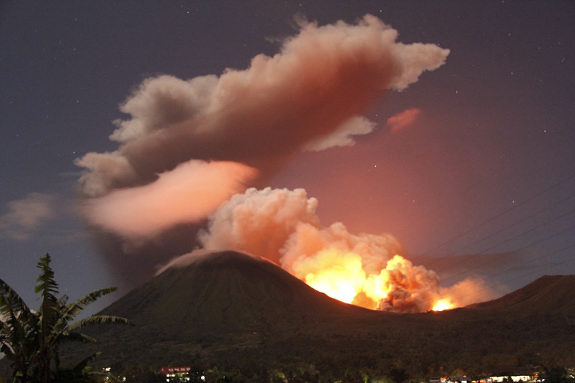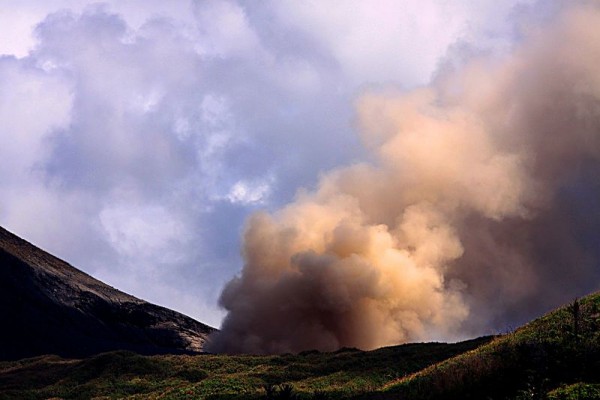Volcanic activity resumes at Indonesia’s Mount Lokon

Indonesia’s Mount Lokon, which is located on the northern tip of the island of Sulawesi, erupted three more times on Wednesday. Mount Lokon spewed out ash as high as 250 meters (820 feet) which was heading north, the Antara news agency reported, adding that the eruptions also triggered several tremors, three of them shallow.
Over the past few days, Mount Lokon has been showing increasing activity and constant tremors. Initial tremors had an amplitude of 2 to 10 millimeters (0.07 to 0.39 inches), but on Tuesday seismic records documented tremors with an amplitude of up to 18 millimeters (0.70 inches).
The Volcanic and Geological Disaster Mitigation Center has not raised Mount Lokon’s alert status to level IV despite the ongoing eruptions, instead keeping it at level III. On August 17, Mount Lokon began to spew volcanic ash which fell as far away as the Kinilow I village and the Tinoor areas in North Tomohon sub district, which is a short distance from Lokon’s crater.
Since June, Mount Lokon has shown constant volcanic activity, prompting authorities to raise its status to alert on June 27 and watch on July 10. A series of eruptions in mid July forced at least 5,269 locals from the villages of Kinilow, Kelurahan Kinilow I and Kakaskasen 1 to evacuate the area.
While most residents returned to their homes later that month, some 222 people remain at temporary refugee camps because their homes are in Mound Lokon’s red zone – 3 kilometers (1.86 miles) from its crater. After July’s activity, Mount Lokon’s alert level was lowered from watch to alert, and has remained at this level since.
Dozens of active volcanoes in Indonesia are part of the Pacific Ring of Fire, known for frequent earthquakes and volcanic eruptions. Next to Mount Lokon is its volcanic twin, Mount Empung, just 2.2 kilometers (1.3 miles) away.
One of Indonesia’s most active volcanoes is Mount Merapi, which is located on the island of Java near Jogjakarta, the country’s second-most visited area after Bali. Last year, more than 300 people were killed in a series of eruptions between October and November which also displaced over 300,000 people. (IWO)


Commenting rules and guidelines
We value the thoughts and opinions of our readers and welcome healthy discussions on our website. In order to maintain a respectful and positive community, we ask that all commenters follow these rules.